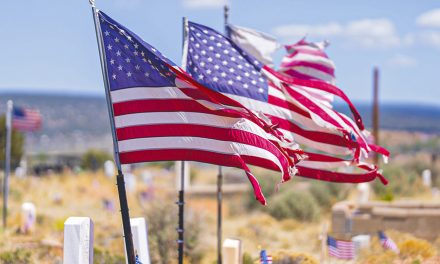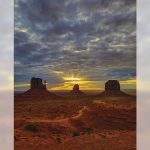
Letters: Coal mining: our way or their way?
They arrived on land (Kin Hozhoni) where once it was a commerce center, an intersection between many other groups and Chaco Canyon. The commerce center once used coal as a fuel source. There are signs of very ancient dugouts along canyon walls. They are no longer.
Now, they bring with them a message of “continuance” for a dying industry of digging up old bones. In October 2017, I went to see for myself the coalmine site owned by Peabody Energy.
A resident of Forest Lake Chapter provided a tour of the mining site. What lay before me was the true nature of “colonization,” a Western philosophy that has embedded itself into the mindset of those who would rather deny our future existence and instead take comfort in now as long as it’s done in a prayerful way. Many Navajo Nation chapters have been impacted by coal mining beginning in the 1960s. The appetite for mining grew with each passing season that resulted in the removal of thousands of our brethren on the Black Mesa plateau in the 1970s with the Navajo-Hopi relocation. Broken families resulted affecting each generation thereafter. Today, along the back roads of communities near the Peabody mining site, trucks are overloaded with hay for livestock and water hauling tanks for human and animal consumption.
The livestock roam the side roads eating the foliage. As one looks toward the many mounds of reclaimed land covering open mine pits, grass grows. Yet, the grass planted is not edible for livestock. Take a radiation detection device to the top of the mounds planted with grass and one will read high levels of radiation. Where there is coal, there is uranium.
Many of the natural springs and groundwater sources are now contaminated. When Black Mesa Coal Mine was shut down in December of 2005, an elder took her sheep to a water pond situated where once coal mining took place. She lost nearly half of her flock due to water contamination.
A question was raised about the health impacts on mine workers: Black Lung disease. They said there have been no cases of the disease among the mineworkers. A question was raised about the future impact on the health of mine workers: Who will pay for the impacts?
They once created our government for their appetite with the creation of a business council in the 1920s (aka Navajo Nation Council today). They saw with their eyes the wealth of our people through our livestock and creativity. They also knew what was under our feet. As with the Navajo-Hopi Relocation Act of 1974, so too, did they act in the 1930s to reduce our wealth and break us for their appetite to mine uranium and have ready a human resource of people with less livestock.
Today, we continue to live with that infection upon our people. They are determined to continue digging up old bones even though the future for a dying industry is at hand.
They are determined to place our investments and health of our land and people at risk for 10 more years. They are determined to continue receiving benefits for personal gain. We voted at the chapter community I belong to. I voted no to our Navajo Nation government continuing their appetite for colonization benefits.
I voted no for us to purchase Navajo Generating Station and Peabody coal mine. Hopefully, the wisdom before the Treaty of 1868 still lingers within the chamber of our Council. Ultimately, our way or their way.
Percy Byron Anderson
Manuelito (Kin Hozhoni), N.M.
Government has not proven vaccines are safe
I wanted to share these documents with you regarding childhood vaccinations. We are often told by the U.S. government agencies how safe/effective vaccines are and how they eradicate diseases. However, we are never told the other side that includes vaccine injuries, vaccine ingredients, vaccine risks, lack of vaccine safety and how the government has protected the vaccine manufacturers from any liability, but are pushing for vaccine mandates across the country.
The Informed Consent Action Network requested proof of vaccine safety studies from the U.S. Health and Human Services, since it became their responsibility after the National Childhood Vaccine Injury Act of 1986.
HHS was responsible for ensuring vaccine safety and reporting on it every two years. In the documents, they admitted to not having done this in over 30 years. All the documents are at https://icandecide.org/governments/. Further information can be found on the Robert F. Kennedy Jr. website at childrensheathdefense.org.
Chelsea Montgomery
Lacey, Wash.
To read the full article, pick up your copy of the Navajo Times at your nearest newsstand Thursday mornings!
Are you a digital subscriber? Read the most recent three weeks of stories by logging in to your online account.








 Highway 264,
Highway 264, I-40, WB @ Winslow
I-40, WB @ Winslow